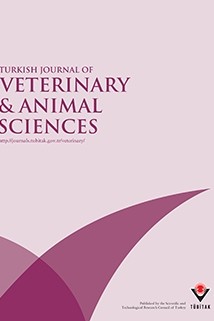
Turkish Journal of Veterinary and Animal Sciences
Yazarlar: Hatice ERÖKSÜZ, Yesari ERÖKSÜZ, Nursal METİN, Harun ÖZER
Konular:-
Anahtar Kelimeler:Encephalitozoonosis,Naturally occurring infection,Morphologic lesions,Rabbit.
Özet: A four-month study of the distribution of morphologic lesions relating to encephalitozoonosis and the staining proper-ties of Encephalitozoon cuniculi was carried out on 40 rabbits from a breeding colony of 100 White New Zealand rabbits. Prominent and constant gross lesions, distinguished by subcapsular, small depressions, were identified in the kidneys of 37 rabbits (92.5%). These lesions were bilateral, and exhibited focal and multifocal distribution. Microscopic examinations of the kidneys revealed that the lesions were characterized by non-purulent granulomatous interstitial nephritis (55%) and chronic interstitial nephritis (45%). Non-purulent focal granulomatous encephalitis, frequently located in the cerebral cortex, was also detected in 8 rabbits, corre-sponding to 20% of the total. In addition, mild meningitis was also found in some of these cases. Special staining methods (Grocot's methanamine silver nitrate, Levaditi-Manovelian, Brown & Brenn, MacCallum & Goodpasture, Ziehl-Neelsen, May-Grunwald Giemsa) were used to reveal sporozoids and pseudocysts in paraffin sections. Silver impregnation methods were found to be more reliable and the results more easily interpretable than the others, particularly with regard to kidneys. Sporozoids and pseudocysts were found in 42.5% of the total cases, either in the brain or kidney.